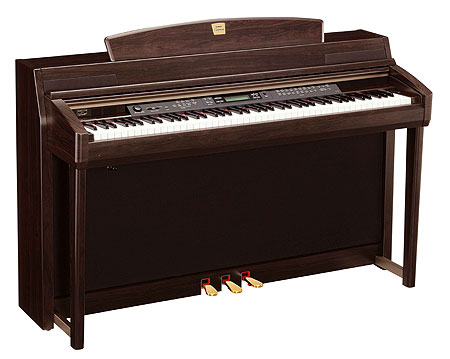The Piano |
|
 |
The actual piano itself is a virtual 9" Hamburg Steinway, created with the product Ivory 1.5, from Synthogy. This is a beautifully sampled instrument (10 levels of sampling — the average digital piano is 4 levels), requiring quite a lot of computational power and storage space, but well worth the investment. NOTE: as of December 2007 I am exploring the possibility of using the Yamaha Clavinova CLP 280's own sound in these recordings. Haydn Sonata No. 58 in C Major HXVI:48 is the first sonata to be recorded using the Clavinova's sound, together with a bit of light reverb. |
The Keyboard Controller
|
|
|
The keyboard controller (i.e., the physical object that I'm actually playing) was originally a Yamaha P-90 Electronic Piano. None of its own sound was used in these recordings, however: it is used solely as the controller. I have recently replaced the P-90 with a Yamaha Clavinova CLP 280, which has a superb action, including standard weighted wooden keys. All recordings made after mid-December 2007 will use this keyboard, and there's a strong possibility that it may provide the sound for the recordings from now on. |
The Software
|
|
 |
My software of choice is Logic Pro, from Apple. Logic contains every possible audio-MIDI-recording and editing tool I require for this kind of project. However, I have not done much in the way of "doctoring"; I use Ivory for the sound generation, and the wonderful Space Designer reverberation plug-in to create the sonic environment. Of course editing, re-takes, the occasional nip 'n' tuck here and there, is part of the process, but these are 'real' recordings, and not Frankenstein-monster-performances manufactured one MIDI message at a time. |
| The Recordings | |
The recordings are all in mp3 format, recorded at 160 kbps. You may play them directly in your web browser, or save them for later hearing if you prefer.
|
|

